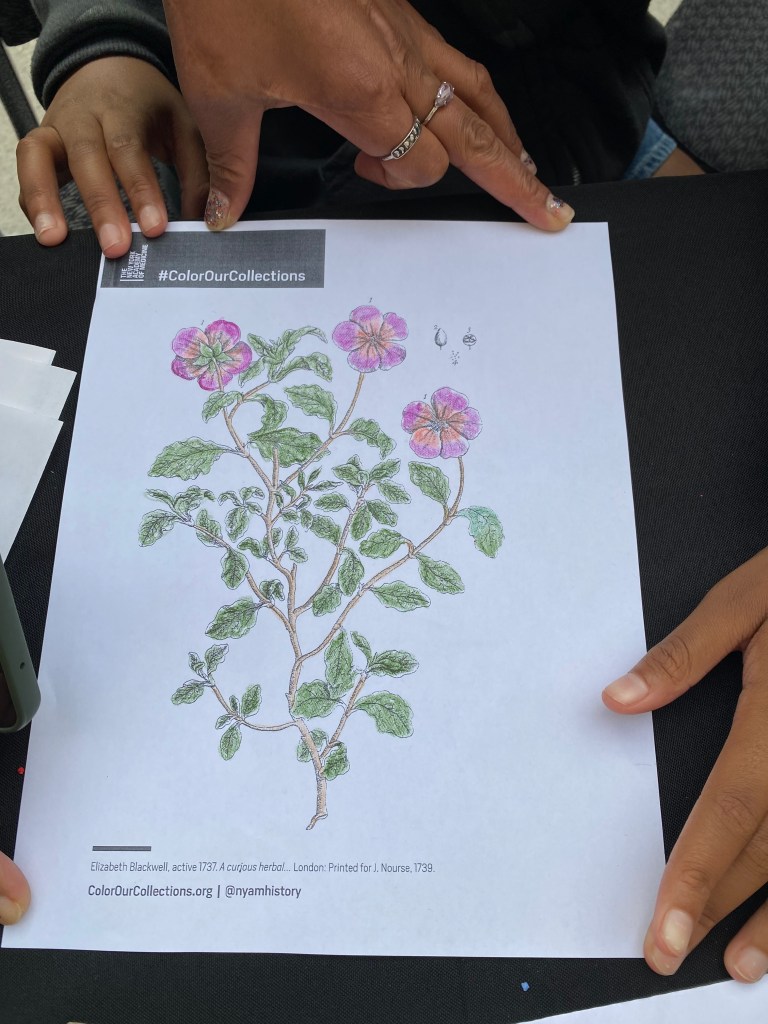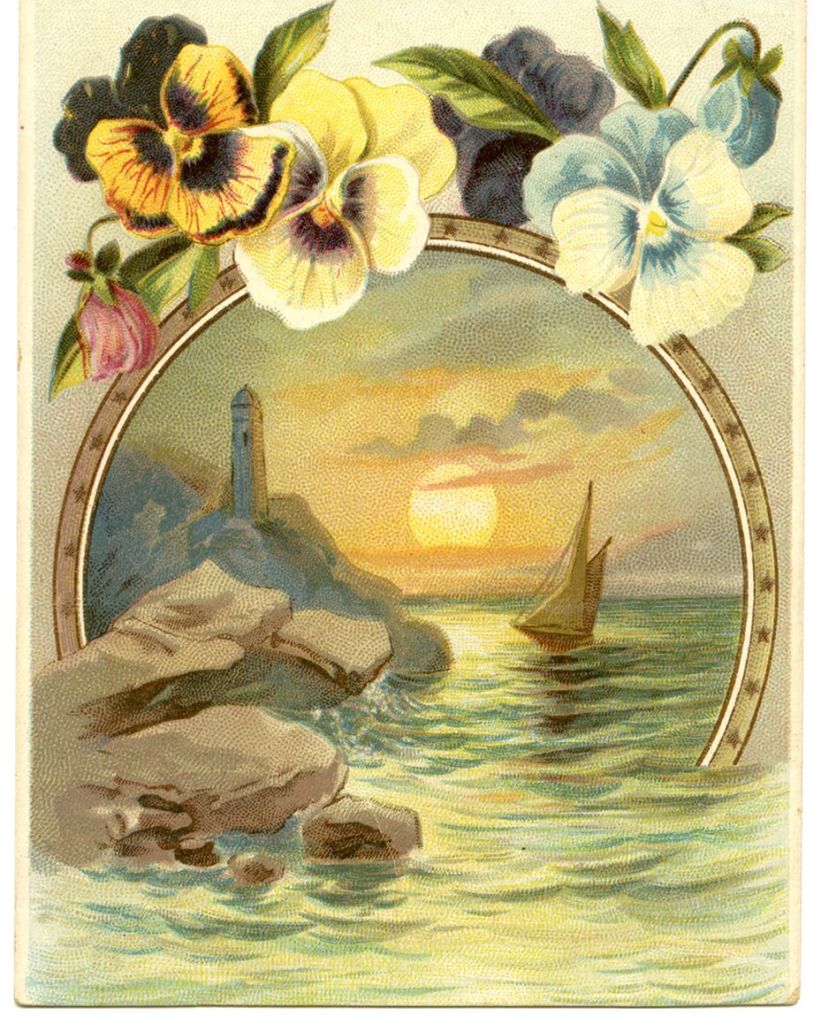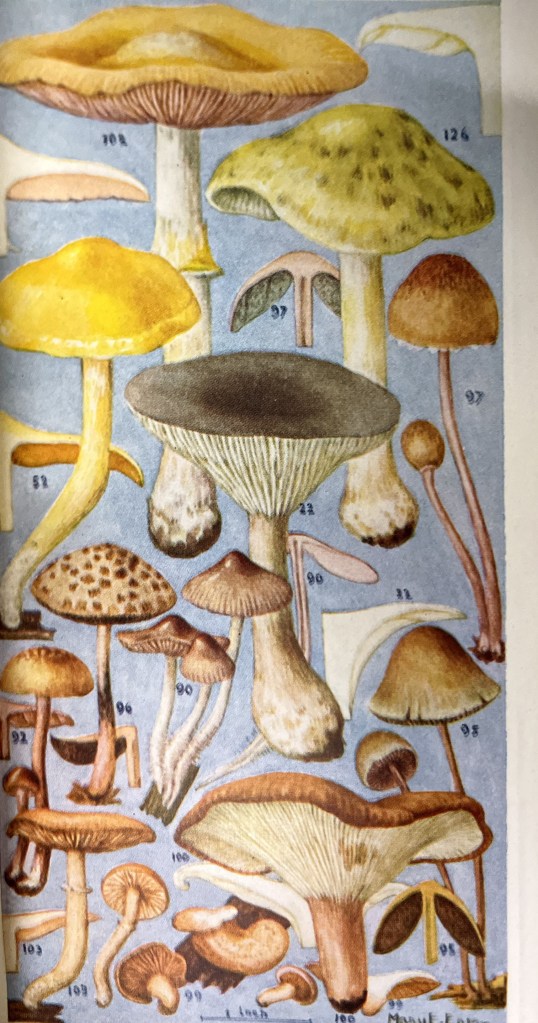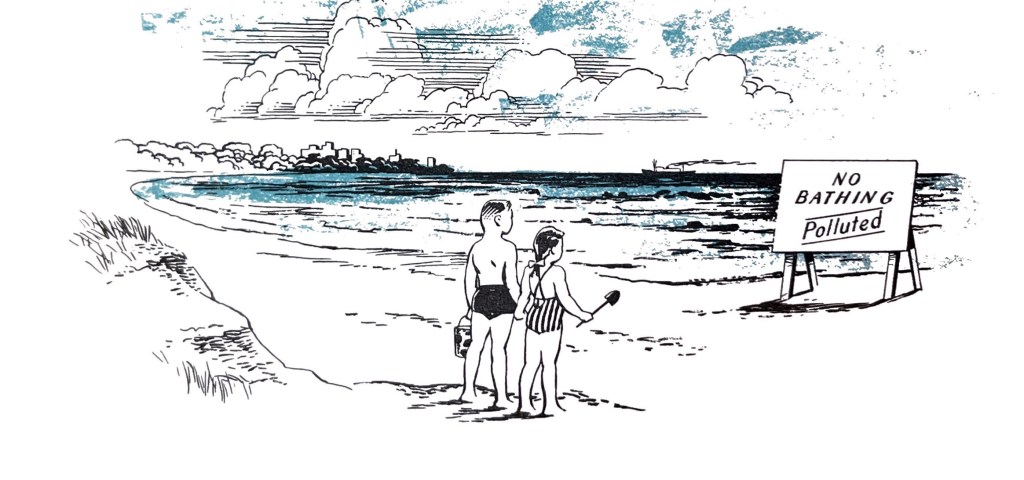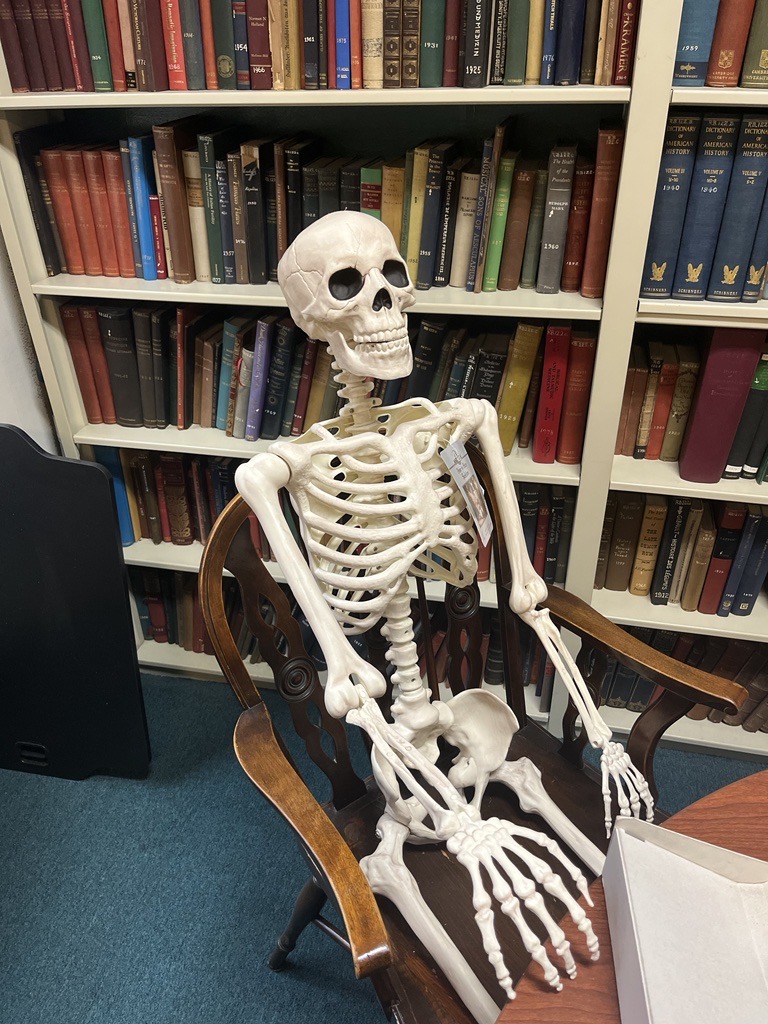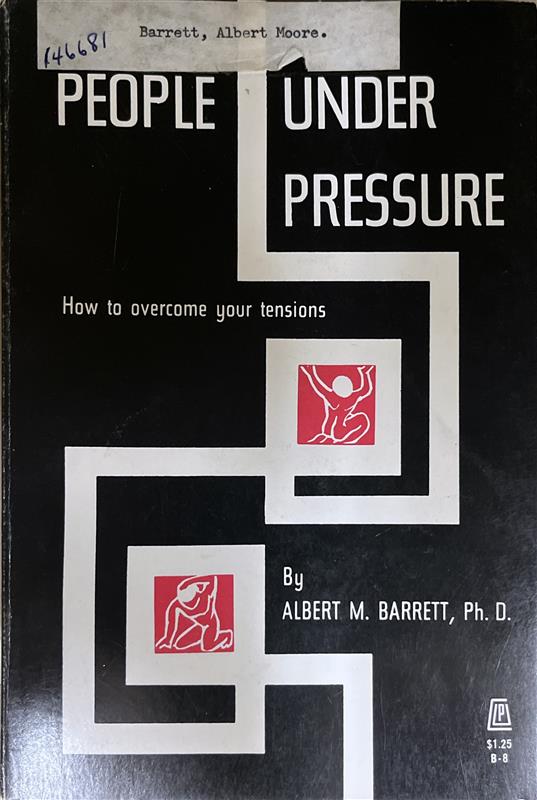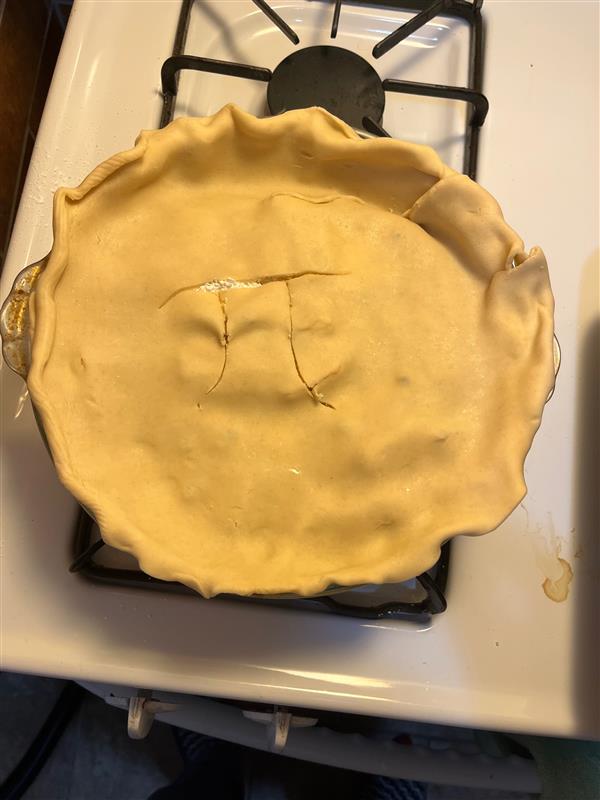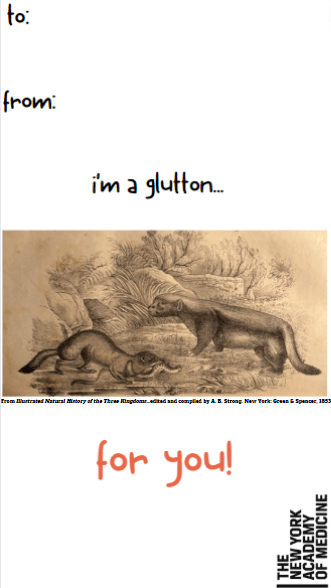by Anthony Murisco, Public Engagement Librarian
Relaxation is just what the doctor ordered! Specifically, Dr. George S. Stevenson of the National and International Association for Mental Health. In his book, How to Deal with Your Tensions (1957), he says that “anxiety and tension” are essential parts of being alive. If we did not experience these feelings, we wouldn’t be equipped to manage the high or low-intensity situations we experience day to day. It is indeed an anxious time. We face threats such as climate change and the spread of misinformation. Writing in 1957, Dr. Stevenson spoke of real high tensions his society faced, “While it is true that we live today under pressure of intense competition, economic uncertainty, and the possibility of war…” Stevenson continued, “our ancestors faced other perils of equal magnitude.” It is important to realize each generation has its own struggles.
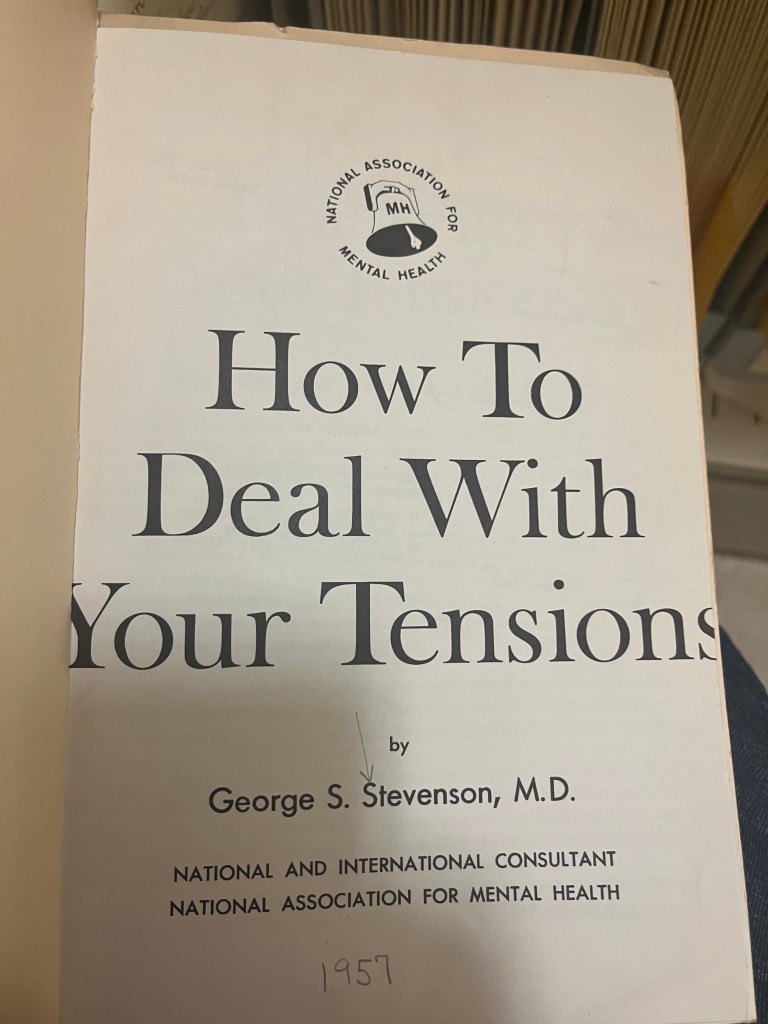
Dr. Stevenson produced eleven tenets for dealing with our feelings. These range from “Talk It Out” to “Shun the ‘Superman’ Urge’ to “Give the Other Fellow A Break.” We know these ideas but hearing them prescribed feels different.

The two that we want to focus on are #2, “Escape for a While,” and #11, “Schedule Your Recreation.” His ideas of escape are not necessarily jetting off to an island vacation! You can find escape by “[losing] yourself in a movie or a book or a game.” Even a “brief trip or change of scene” can make you feel relaxed. Public parks are beautiful places to go for a stroll.
Scheduling recreation is sometimes hard—especially for an adult. When we are younger, we get scheduled vacation. The summer is ours! As adults, we have more responsibilities. As Dr. Stevenson mentioned, we don’t have to schedule a week-long trip! We can buy tickets in advance to the latest blockbuster or art-house film. We can schedule an hour or two before bed to transport ourselves with the help of a book.

This summer we asked, “How are you recharging?” We want to hear what recreation and relaxation you have been taking part in. Dr. Stevenson has spoken of the benefits but so have others.
In 1924, Joseph Ralph, a psychologist and psychoanalyst, declared that he had found the fountain of youth. It was not in some unobtainable secret cave, and he was not going to keep it to himself. The secret to still being young was electronic relaxation, a method of inducing tension.

Ralph declared that the secret to eternal youth lived in the cell’s protoplasm. Through wear and tear, the protoplasm becomes weak, causing us to age. The agent responsible was not our physicality but instead our mental conflicts. Our intense emotional reactions cause the protoplasm inside the cells to harden. If hardened, they can no longer provide us with the energy we need. He deduced that this is why we acted “older.” By creating tension, Ralph believed the protoplasm was being stretched and worked out like a muscle.
Even your insurance company wants you to relax! Metropolitan Life Insurance gave advice in their pamphlet “Relax and Revive.” In comparing the body to the mechanical machines, we use daily, they remind us that “extra care avoids shutdowns.”
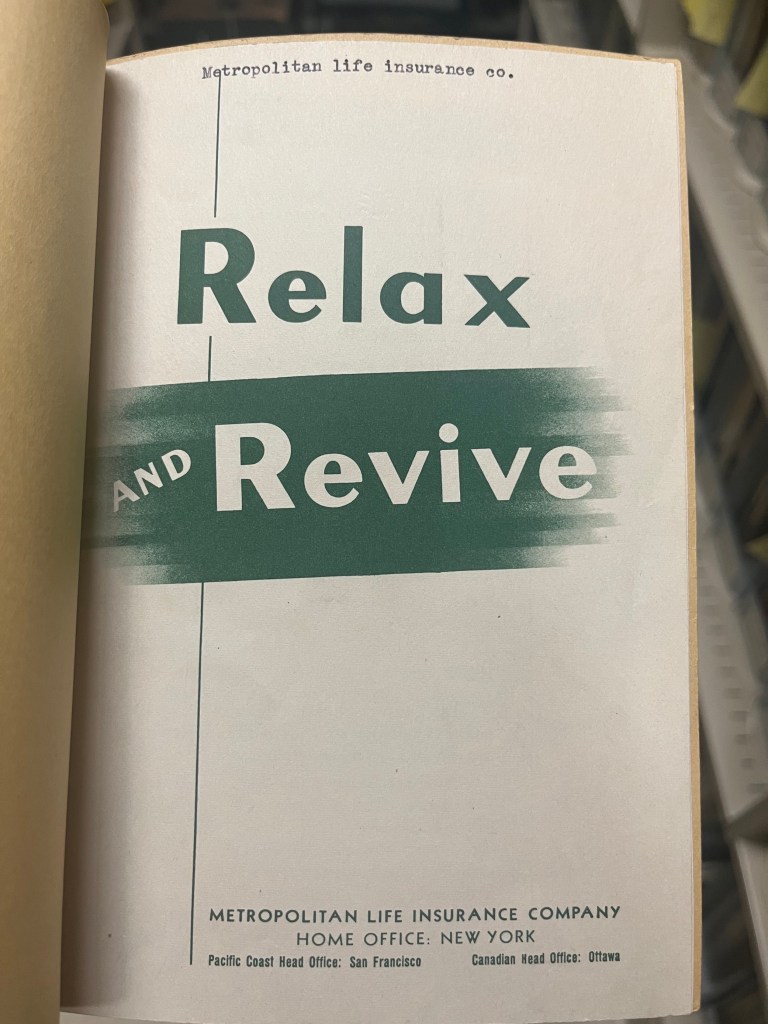
Whether we get a day, a whole weekend, or the entirety of a season, it’s important to carve out time for yourself. As Met Life put it, “How you use your precious hours of leisure is of the greatest importance in keeping yourself fit, and in fighting the good fight on the home front.” To take care of what you need to take care of, you have to start with yourself.
Like Dr. Stevenson, the insurance company wanted you to figure out what works best for you. Besides the typical ways we think of recreation, the pamphlet stated that perhaps just sitting there is what works for you! “Maybe idleness is your recreation. That’s all right too.”

While we all may have ideas of what recreation is, it looks different for all. We wanted to share how people have been relaxing so far this summer. We’ve gotten pictures, postcards, and stories from fellow NYAM staff, friends, family, and patrons. We thank everyone for their responses so far.
The staff here at NYAM filled out beautiful New York City—centric postcards. They relayed their goals for the summer, which included personal goals (vacations, exercise, spending time with family and pets, and of course, recovery), as well work goals (planning notable events, organizing office space, and remembering to respond to emails on time).

We even got a response from a friend of a famous 100-foot-tall ape…

Parks are always fun to visit during the summer. This one comes from Theodore Roosevelt National Park in North Dakota, one of 63 with that distinction.
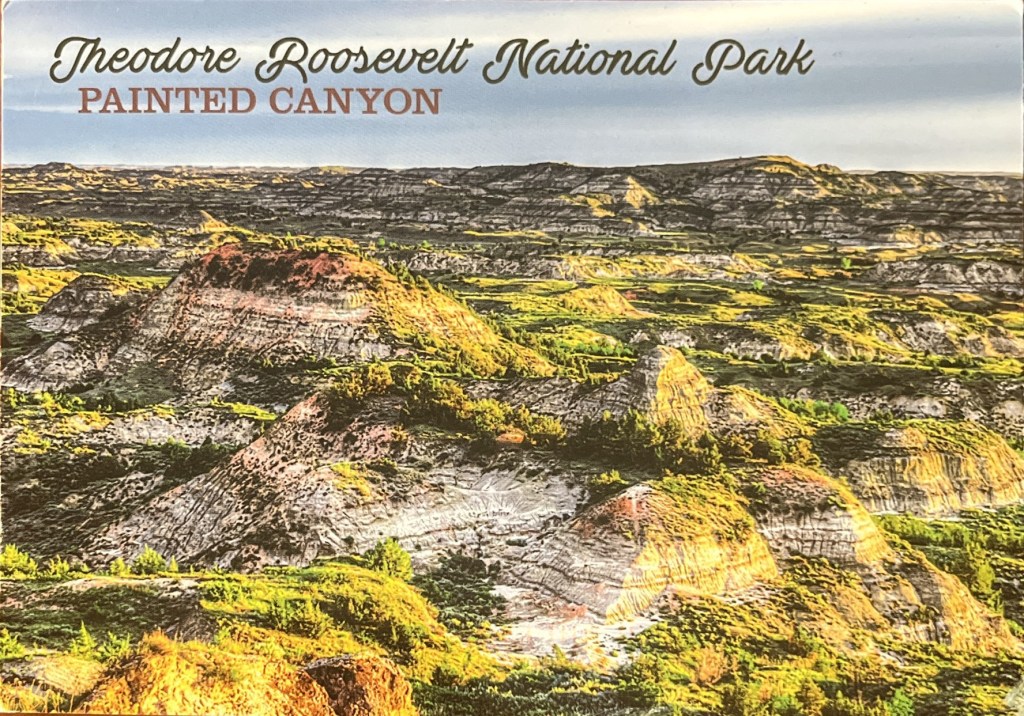
Indiana seems like a popular destination this summer. Three of our postcards come from different parks there.
Rachel visited Wolf Park and talked about the different wildlife she saw there, including foxes, turtles, and of course, wolves! She mentioned how the park gave her tips on how to help the wildlife there and in the larger environment.

Megan went on a trip to Turkey Run State Park in Indiana where she went on a hike for her recent birthday. She loved being in nature with her sister and best friends.

Our Historical Collections Librarian sent a postcard from a road trip she took. One of her stops brought her to the Indiana Dunes National Park. There she got to walk along the Lake Michigan Shoreline!

One of our patrons, Dr. Sharon Packer, sent us these photos from Bearsville, New York. The pictures remind us of the beauty and therapeutic power of relaxing in our natural environment. For those in a big city, it’s nice to get away for a bit. We are lucky to live only a train ride away from such different scenery. There also looks to be delicious home cooking! Both making and eating are perfect relaxation practices.


We don’t want to scare you; the summer is not over yet! With that, we are still collecting postcards and pictures.
Postcards/letters can be sent to:
Attn – NYAM Library
The New York Academy of Medicine
1216 Fifth Avenue
New York, NY 10029
Or you can always e-mail us at: librarysocial@nyam.org.
We look forward to hearing from you! And more importantly, we hope you are having a relaxing summer.

References:
Harris, Antron. The Man Who Stopped Growing Old : Joseph Ralph, Psychologist and Psycho-analyst, Discoverer of the Electronic Relaxation Method of Mental and Physical Rejuvenation. B.F. Tibby, 1924.
Metropolitan Life Insurance Company. Relax and Revive. Metropolitan Life Insurance Company, 1920?.
Stevenson, George S. How to Deal with Your Tensions. National Association for Mental Health, c1957.



